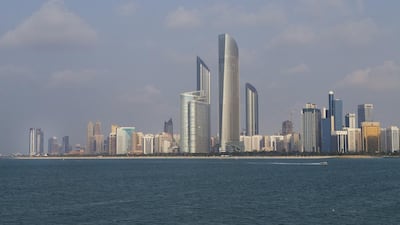notebook
I saw a car the other day with side-view mirror stanchions covered in sparkly crystals. They gleamed, even in the dim car park. Out on the road in the noonday sun, all that bling must look like mini disco balls.
Those mirrors seemed of a piece with much of the building that’s happening around Abu Dhabi. Skyscrapers are popping up as if in a race to see which building can be the tallest and shiniest. Each new building gets wrapped in a gleaming expanse of glass, a defiant rejection of the realities of the UAE – heat, dust, wind. Inevitably, within a few weeks of completion, these sparkling spires become buildings en croute each with a flaky crust of sand, salt and humidity. In order to make room for these new towers, whatever is at their base must be pushed aside or, in some instances, ploughed under. The towers rest on a swath of Abu Dhabi’s past that is in danger of being lost, although artists and scholars in the region have begun to raise awareness about the need to preserve these urban markers from the city’s early days as the new nation’s capital. The recent UAE Pavilion at the Venice Architectural Biennale, for example, highlighted the importance of engaging with multiple layers of history and culture rather than just the newest, uppermost one. Without the anchor of older buildings and older neighbourhoods, what will root these new towers? What will root the city’s understanding of itself?
For the last few weeks, I’ve been discussing similar questions with students in my literature classes. How do we engage with the past, particularly, with multiple histories around a single event? How does personal history link to national history, and how do these connections (and disjunctions) get described? Much to my students’ collective chagrin, I tell them that I don’t have answers to these questions.
This April, we are planning a trip to Bhutan, a country where I won’t find any skyscrapers, new or old. Bhutan famously measures its national well-being by the Gross National Happiness index, a set of principles that focusses on sustainable and equitable development in conjunction with environmental and cultural conservation. I suppose the balance between development and conservation might be easier in a country like Bhutan, which has a relatively homogenous population of fewer than a million people. That said, the Bhutanese model has attracted enough attention for the United Nations to endorse it. It will be interesting to see how, or if, other countries can adapt the Bhutanese principles for their own people. What would happen if economics stopped being the primary means by which countries measured their stability and well-being?
On Saadiyat Island, where I live, it seems at first glance that perhaps the balance between conservation and development has been achieved. Development sprawls low out here; the towers of Abu Dhabi aren’t rising along the beachfront. Much of the development slated for the island centres around museums and schools, institutions devoted to history and culture, contemplation and study. Developing Saadiyat seems simple, you might think, because it’s not as if there are landmark buildings or old neighbourhoods out here to preserve – there’s nothing but sand, water and sky. But that, of course, is among the thorniest of conservation questions: how to preserve open space against the pressures of urban development?
In my mind Saadiyat has become a test case for Abu Dhabi urban expansion. Can conservation win out against development? After all, there are plans to build a mall out here too. I can see it already: a big shopping centre, surrounded by parking lots filled with cars, their mirrors glittering in the sun.
Deborah Lindsay Williams is a professor of literature at NYU Abu Dhabi. Her novel The Time Locket (written as Deborah Quinn) is now available on Amazon

